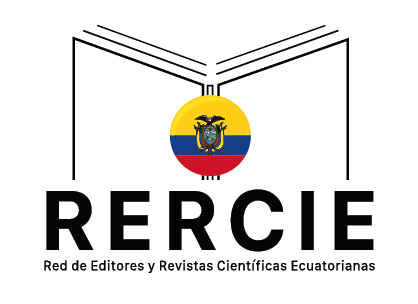Philosophical Culture of Laughter and the Psychology of Humor
Palabras clave:
thecomic, culture, humor, satire, irony, witticism, norms, emotions, cognitions, sign systemResumen
The study of the phenomenon of laughter opens up opportunities in understanding the phenomenon of culture, since humor is an important element of culture, reflects the characteristics of national consciousness and attitude, is a means of regulating and preserving social values. The phenomenon of humor in Russian psychology is not fully disclosed, so it is important to turn to philosophy, cultural studies, in terms of which several areas of the study of the comic are of interest for psychology: the comic as deviation from the norm and the destruction of the sign system; distinguishingphysiological laughter and social (cultural)laughter; the proportion of emotions and intellect in the comic.
The analysis makes it possible to assert that the phenomenon of the comic is essential to study in all its manifestations in wholeness and unity: the physiological laughter and the comic laughter, the unity of emotion and intellect in understanding and creating the comic. It has been revealed that humor possesses a powerful potential, allowing the individual not to easily accept the norms and laws of society, but show some flexibility in the interpretation of these norms.Descargas
Referencias
Musiichuk, М.V. (2012). Cognitivemechanismsofthestructureofthecomic: philosophical and methodological aspects. — 365 p.
Sychev,А.А. (2003). The Nature of Laughing or the Philosophy of the Comic. Saransk:Mordov University Press, – 176 p.
Kulinich,М.А. (2004). Linguistic Culture of Humor (based on the material of the English language): Monography. Samara: SSPU Press. – 264 p.
Ryumina, М.Т. (2011). AestheticsofLaughter: Laughter as a Visual Reality. – М.: The Publishing House “LIBROKOM” – 320 p.
Latyshev,Y. V. (2003). ThePhenomenonofHumorinSocio-Informsational Interaction: Novosibirsk – 147 p.
Karasev, L.V. (1996). ThePhilosophyofLaughing. М.: TheRussianState Humanitarian University. – 224 p.
Shcherbakova, О. V., Osorina,М. V. (2009). HumoristicComponentasaFactorof Increasingthe Complexity of Intellectual Tasks (Based on the Test D. Veksler). The Journal of Saint-Petersburg University. Series 12. Issue 1. P. 1. – P. 108 – 115.
Aliullina, F.M., Artemyeva, T.V. (2016). Dialectics in understanding comic text contradictions by children. Journal of Organizational Culture, Communications and Conflict. Volume 20, Special Issue. P 13-20.
Bayanova, L.F., Tsivilskaya, E.A., Bayramyan, R. M. & Chulyukin, K. S. (2016). A cultural congruence test for primary school students. Psychology in Russia: State of the Art. 9(4). 94 – 105.
Ersoy, A.F, Turkkan, B. (2010). Analyzing Social and Environmental Issues Elementary School Students Reflect in their Cartoons. Egitim ve bilim – education and science. 35 (156). 96 – 109.
Cornelio-Mari, EM (2015).Mexican Children and American Cartoons: Foreign References in Animation. Comunicar. 45. 125 – 132, DOI 10.3916/C45-2015-13
Goel, V., Dolan, R,J. (2007). Social regulation of affective experience of humor. Journal of cognitive neuroscience. 19 (9). 1574 – 1580. DOI 10.1162/jocn.2007.19.9.1574.
Kellner, R., Benedek, M. (2017). The Role of Creative Potential and Intelligence for Humor Production. Psychology of aesthetics creativity and the arts. 11 (1). 52-58. DOI 10.1037/aca0000065
Nusbaum, E.C., Silvia, P.J., Beaty, R.E. (2017). Ha Ha? Assessing Individual Differences in Humor Production Ability. Psychology of aesthetics creativity and the arts. 11(2). 231 – 241.DOI 10.1037/aca0000086
Boyle, F.,Stack, N. (2014). An explorative study into the possible benefits of using humor in creative tasks with a class of primary five pupils. Humor - International Journal of Humor Research. 27 (2). 287 – 306. DOI 10.1515/humor-2014-0029
Teske, J, Clausen, CK, Gray, P, Smith, LL, Al Subia, S, Szabo, MR, Kuhn, M, Gordon, M, Rule, AC (2017). Creativity of third graders' leadership cartoons: Comparison of mood-enhanced to neutral conditions. Thinring skills and creativity. 23. 217 – 226. DOI 10.1016/j.tsc.2017.02.003
Bakhtin, М.М. (1990). Creativityof Fransois Rabelais andPopularCultureofthe Middle Ages and Renaissance. – The 2nd Edition – М.: Hudozh. Lit. – 543 p.
Likhachev,D.S., Panchenko А.М. ( 1976). The World of Laughing of the Ancient Rus. Leningrad: Nauka Publishing. – 213 p.
Dmitriev, А. V. (1998). TheSociology of Political Humor. М. – P.300.
Vygotsky, L. S. (2005). Thinking and speaking. Moscow: Pedagogics
Aubouin, E. (1948). Technique et psychologie du comique. Marseilles.P. 12 – 13
Borev, Y. (1970). TheComic, orHowtheLaughterCorrectsImperfectionsoftheWorld, Cleanses and Renews a Man and Strengthens the Joy of Being. – М.: Iskusstvo. – 269 p.
Stolovich,L.N. (1999). Philosophy. Aesthetics. Laugh. — SP–Tartu: Kripta.
Redkozubova, О.S. (2010). TheLaughCultureoftheStudentsasa Creative and Ontological Phenomenon: The Thesis for Candidate of Philosophical Sciences: 24.00.01 / О.S. Redkozubova. –Tambov. – 152 p.,P. 27
Propp,V.Y. (1999). TheProblemsofComicalityandLaughing. The Ritual Laughing in Folklore. — М.: Labirint. — 288 p.
Ziv, A. (2010). The social function of Humor in interpersonal relationships. Society, 47(1), 11 – 18.
Bowker, J.C., &Etkin, R.G. (2014). Does humor explain why relationally aggressive adolescents are popular? Journal of Youth and Adolescence, 43(8), 1322 – 1332. doi:10.1007/s10964-013-0031-5.
Akhmetzyanova, A.I., Artemyeva, T.V. (2017). Prognostic competence and tendency to deviant behavior of students depending on the level of subjective control. ManInIndia, 2017, 97 (15), 127 –138.
Dzemidok, B. (1974). OntheComic. М.: Progress. P. 7.
Bergson, А. (1900). Laughter.Essays on the Meaning of the Comic. – P.98
Popchenko, I.V. (2005). TheComicPictureoftheWorldasaFragmentoftheEmotional Picture of the World: Based on the Texts by I. Ilf and E. Petrov: Volgograd. – 258 p.
Сiceronis, M. Tulli.De Oratore. Liber II, 216 – 290
Churmaeva, N.V. (1969). Why Witty?. Russian Speech. – № 1.-P. 86.
Luk,А.N. (1977). Humor, Wit, Creativity. М. – 183 p.
Morreall, J. (1983). Taking Laughter Seriously. – Albany: State University of New York Press. – 144 p. P. 3, 20.
Baykova, A.D., Akhmetzyanova, A.I., Artemyeva, T.V. (2016). The relationship between tendency to deviant behavior and level of subjective control and anticipation consistency in schoolchildren. Journal of Organizational Culture, Communications and Conflict, Volume 20, Special Issue 3, 2016. p.1-6



















